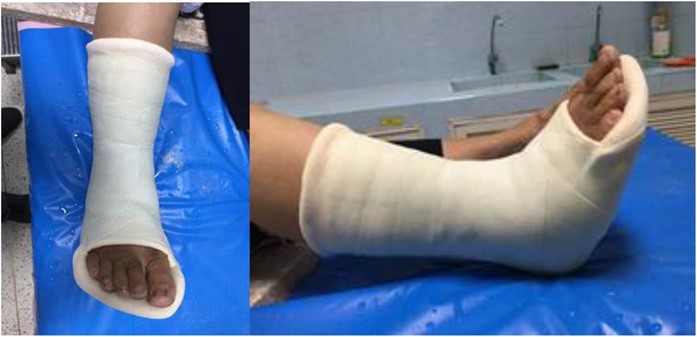The hospital's Emergency Operations Committee is working on their disaster plan. In which components should nurses be included? SELECT ALL THAT APPLY.
Nurses performing duties outside of the nurses' typical job description
A plan for comprehensive practice drills
Identification of resources to meet anticipated needs for food, water, and supplies
An internal and external communication plan
Discharge all surgical clients who are one day or more post-op
Correct Answer : B,C,D
Choice A reason: Nurses performing duties outside of the nurses' typical job description is not a component of a disaster plan. Nurses should only perform tasks that are within their scope of practice, license, and competencE.
Choice B reason: A plan for comprehensive practice drills is a component of a disaster plan. Nurses should be involved in conducting regular drills to test and improve the preparedness and response of the staff and facility.
Choice C reason: Identification of resources to meet anticipated needs for food, water, and supplies is a component of a disaster plan. Nurses should be involved in assessing and securing the necessary resources to provide adequate care and support for the clients and staff during a disaster.
Choice D reason: An internal and external communication plan is a component of a disaster plan. Nurses should be involved in establishing and maintaining effective communication channels with other health care providers, agencies, authorities, media, and community during a disaster.
Choice E reason: Discharge all surgical clients who are one day or more post-op is not a component of a disaster plan. Nurses should not discharge clients without proper assessment, documentation, education, and follow-up arrangements.
Nursing Test Bank
Naxlex Comprehensive Predictor Exams
Related Questions
Correct Answer is D
Explanation
When providing instructions to a client with a below-the-knee cast for a compound fracture of the left ankle, it is important to prioritize their safety and proper care of the cast. The instruction to never scratch under the cast is crucial for preventing complications and maintaining the integrity of the cast.
Let's evaluate the other options:
a) Apply a cold pack to any "hot spots" on the cast.
Applying a cold pack to any "hot spots" on the cast may help alleviate discomfort or itching, but it is not the highest priority instruction. Preventing scratching under the cast is more important to avoid skin damage or infection.
b) Keep the left leg in a dependent position.
Keeping the left leg in a dependent position (hanging down) is not the appropriate instruction for a client with a below-the-knee cast. It is generally recommended to elevate the injured limb to reduce swelling and promote proper blood flow. Elevating the leg would involve keeping it raised above the level of the heart.
c) Expect some increase in pain.
While it is possible for the client to experience some increase in pain after the application of a cast, this instruction alone is not comprehensive or specific enough for proper discharge education. Providing information about pain management strategies or when to seek medical atention for excessive pain would be more appropriate.
In summary, when discharging a client with a compound fracture of the left ankle and a below-the-knee cast, the practical nurse (PN) should provide the instruction to never scratch under the cast. This helps prevent complications and maintain the integrity of the cast, promoting proper healing of the fracture.

Correct Answer is A
Explanation
Choice A reason: Hypertension is a manifestation of increased intracranial pressure because it is part of the Cushing's triad, which is a set of signs that indicate increased intracranial pressure and impaired cerebral perfusion. The other signs of Cushing's triad are bradycardia and irregular respirations.
Choice B reason: Tinnitus is not a manifestation of increased intracranial pressure because it is a symptom of hearing loss, ear infection, or ear damage, not increased intracranial pressurE. Tinnitus is a ringing, buzzing, or hissing sound in the ears that can be caused by various factors such as exposure to loud noise, aging, or medication side effects.
Choice C reason: Hypotension is not a manifestation of increased intracranial pressure because it is a sign of decreased blood pressure, not increased intracranial pressurE. Hypotension can be caused by various factors such as dehydration, blood loss, or shock.
Choice D reason: Tachycardia is not a manifestation of increased intracranial pressure because it is a sign of increased heart rate, not increased intracranial pressurE. Tachycardia can be caused by various factors such as anxiety, fever, or pain.
Whether you are a student looking to ace your exams or a practicing nurse seeking to enhance your expertise , our nursing education contents will empower you with the confidence and competence to make a difference in the lives of patients and become a respected leader in the healthcare field.
Visit Naxlex, invest in your future and unlock endless possibilities with our unparalleled nursing education contents today
Report Wrong Answer on the Current Question
Do you disagree with the answer? If yes, what is your expected answer? Explain.
Kindly be descriptive with the issue you are facing.
